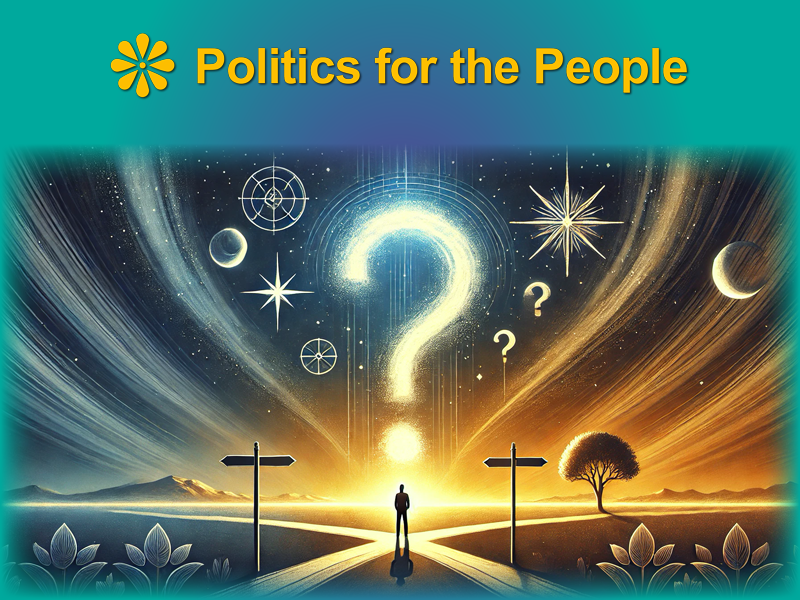Introduction
In a landscape often dominated by problem-centric approaches, Solution-Focused Therapy (SFT) offers a refreshing alternative that emphasizes potential and solutions. At the heart of this innovative therapeutic approach is a profound tool known as the ‘Miracle Question,’ which has applications extending beyond personal therapy into areas like political and social reform.
Understanding the Miracle Question
The Concept of the Miracle Question in SFT

The Miracle Question is a pivotal technique in Solution-Focused Brief Therapy (SFBT), aimed at shifting individuals’ focus from dwelling on problems to visualizing solutions. It poses a hypothetical scenario where a miracle occurs overnight, solving all current problems, and asks: “Suppose tonight, while you slept, a miracle occurred. When you awake tomorrow, what would be some of the things you would notice that would tell you life had suddenly become better?” This question encourages clients to think deeply about what an ideal future would look like, helping them name goals and desired changes without the constraints of their current situation.
Variations for Political and Social Change
Adapting the Miracle Question to a political context can stimulate profound reflections on societal issues, offering a unique tool for civic engagement and reform. For example, the question might be rephrased as: “Imagine you went to sleep tonight, and a miracle happened. When you wake up tomorrow, what would be the first signs you would notice that show our political issues have been resolved? What would be different? How would people be interacting and discussing political topics?” This variation prompts individuals to envision specific changes in societal structures, interactions, and policies, setting a clear vision for what meaningful political change could look like.
The Benefits of the Miracle Question
Visioning a Positive Future
Utilizing the Miracle Question helps individuals and groups focus on positive outcomes rather than current deficiencies. This shift in perspective is not just therapeutic but empowering, serving as a guiding beacon for future actions. It allows people to imagine a state where challenges are overcome and to name the conditions that signify improvement, thereby clarifying what truly matters to them and what changes are most impactful.
Uncovering Hidden Resources
Often, answering the Miracle Question reveals internal strengths, past successes, and untapped resources that individuals were previously unaware of or had underestimated. This discovery boosts confidence and self-efficacy, empowering individuals to use these resources in pursuing their envisioned future, thereby enhancing their capability to effect change.
Goal Setting and Problem Solving
Articulating a problem-free day inherently outlines the steps and milestones needed to achieve this scenario. The Miracle Question thus helps a form of goal setting that is inherently solution-focused, helping individuals break down their ideal outcome into actionable steps. This method of envisioning success provides a practical framework for addressing life’s challenges, encouraging a proactive rather than reactive approach to problems.
Expanding the Impact Beyond Therapy
Personal Sphere: Enhancing Life Quality
In the personal realm, the Miracle Question can lead to significant insights into achieving improved relationships, better health, and overall happiness. By clarifying what one wants in these areas, individuals can create more focused and effective strategies for personal development and fulfillment.
Professional Realm: Driving Innovation and Growth
In professional settings, this question acts as a catalyst to break stagnation and embrace innovation. It encourages professionals to confront challenges directly and fosters an environment of proactive problem-solving and creativity. Organizations can use it to inspire teamwork and innovative thinking, leading to improved performance and job satisfaction.
Political Engagement: Fostering Active Citizenship
For citizens, the Miracle Question can act as a catalyst for political change, helping to visualize a society free from current flaws. This kind of forward-thinking is crucial for defining clear aspirations for governance and community goals, which in turn can drive political activism, community organization, and influence voting behaviours. It encourages citizens to move beyond complaints and engage in proactive, solution-based political dialogue.
The Miracle Question is a tool primarily used in Solution-Focused Brief Therapy (SFBT) to help clients envision a future where their current problems are resolved, thereby identifying possible steps and goals that lead towards that desired state. While traditionally used in therapeutic contexts to focus on personal challenges and aspirations, the concept can be effectively adapted for use in political engagement and social activism.
Application of the Miracle Question in Political Engagement
1. Envisioning Desired Changes: By asking individuals or groups to imagine a scenario where political or societal problems are miraculously solved, participants can better articulate what they actually want to see changed. This can help clarify goals for advocacy and reform, making objectives clearer and more tangible.
2. Identifying Actionable Steps: Once a clear vision is established, it’s easier to work backwards to understand what policies, actions, or reforms need to be implemented to reach that ideal state. This helps in structuring campaigns, initiatives, and movements that are goal-oriented and effective.
3. Increasing Political Participation: The Miracle Question can motivate individuals to become more politically active. By visualizing a better political environment, individuals may feel more compelled to vote, participate in local governance, or engage in activism, as they have a clearer sense of how their involvement could lead to significant changes.
4. Strategic Planning for Political Campaigns: Politicians and activists can use the Miracle Question to better align their platforms with the real desires of their constituents. Understanding what people envision as an ideal resolution to their issues can guide the development of more responsive and impactful political agendas.
5. Facilitating Constructive Dialogue: The Miracle Question can foster more positive and constructive political discussions by shifting the focus from current problems to future solutions. This can help reduce partisan conflict and promote a more collaborative approach to addressing complex social and political issues.
6. Inspiring Hope and Resilience: In times of political turmoil or social unrest, the Miracle Question can serve as a powerful tool for inspiring hope and resilience. It reminds individuals and communities of their agency and the potential for positive change, which is crucial for sustaining long-term engagement and activism.
By integrating the Miracle Question into political engagement strategies, activists, community leaders, and politicians can create a more proactive, inspired, and solution-focused approach to governance and societal development. This not only enhances the effectiveness of political actions but also empowers citizens by connecting them more directly with the processes that shape their lives.
Conclusion
The Miracle Question is more than just a therapeutic tool—it is a powerful catalyst for personal, professional, and political transformation. By promoting a solution-focused approach, it empowers us to rethink how we handle challenges, encouraging us to visualize and strive for a better future rather than merely contend with current difficulties.
Call to Action
Think about the changes you want in your life and our society. How can applying the Miracle Question help you achieve these goals? Start by visualizing your ideal world and take actionable steps towards this vision. Share your insights and encourage others to think in solutions, not.
References:
How to Use the Miracle Question in Therapy: 3 Examples: https://positivepsychology.com/miracle-question/

